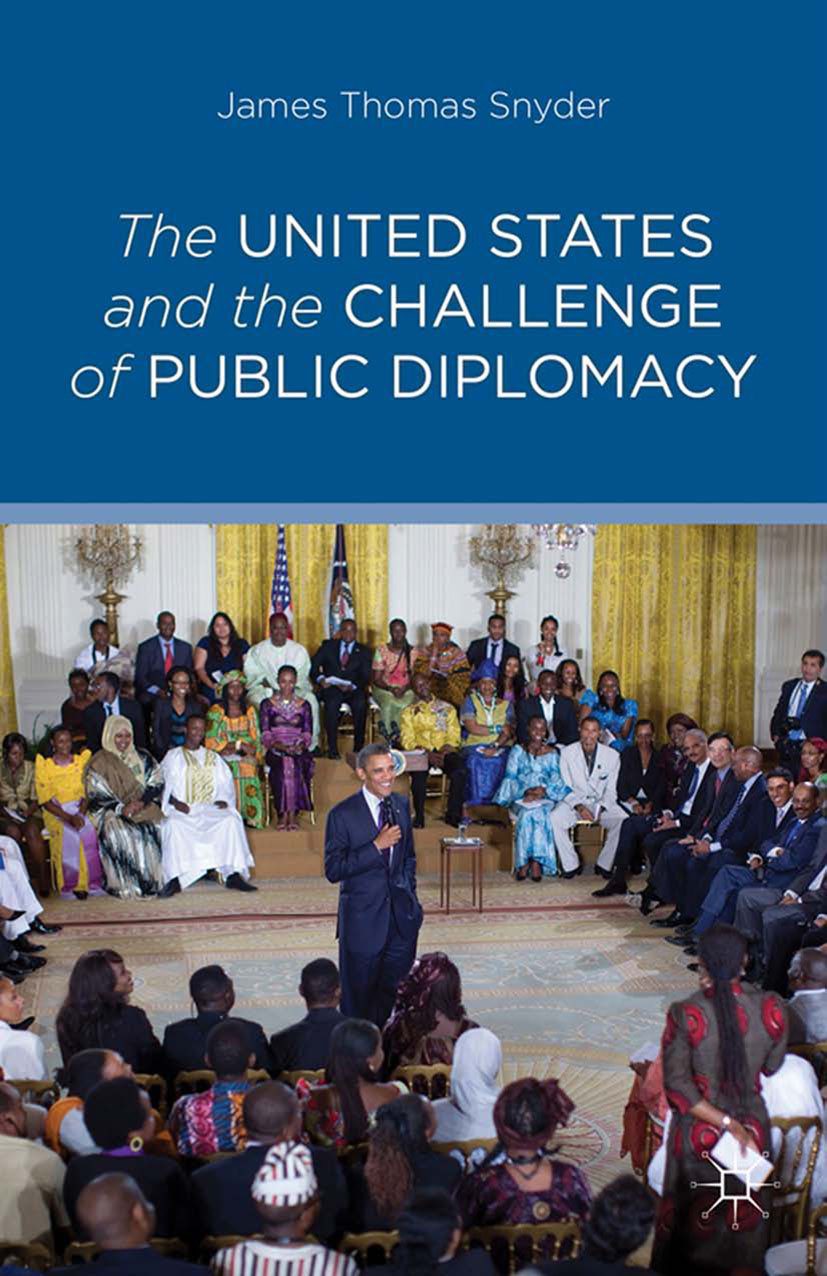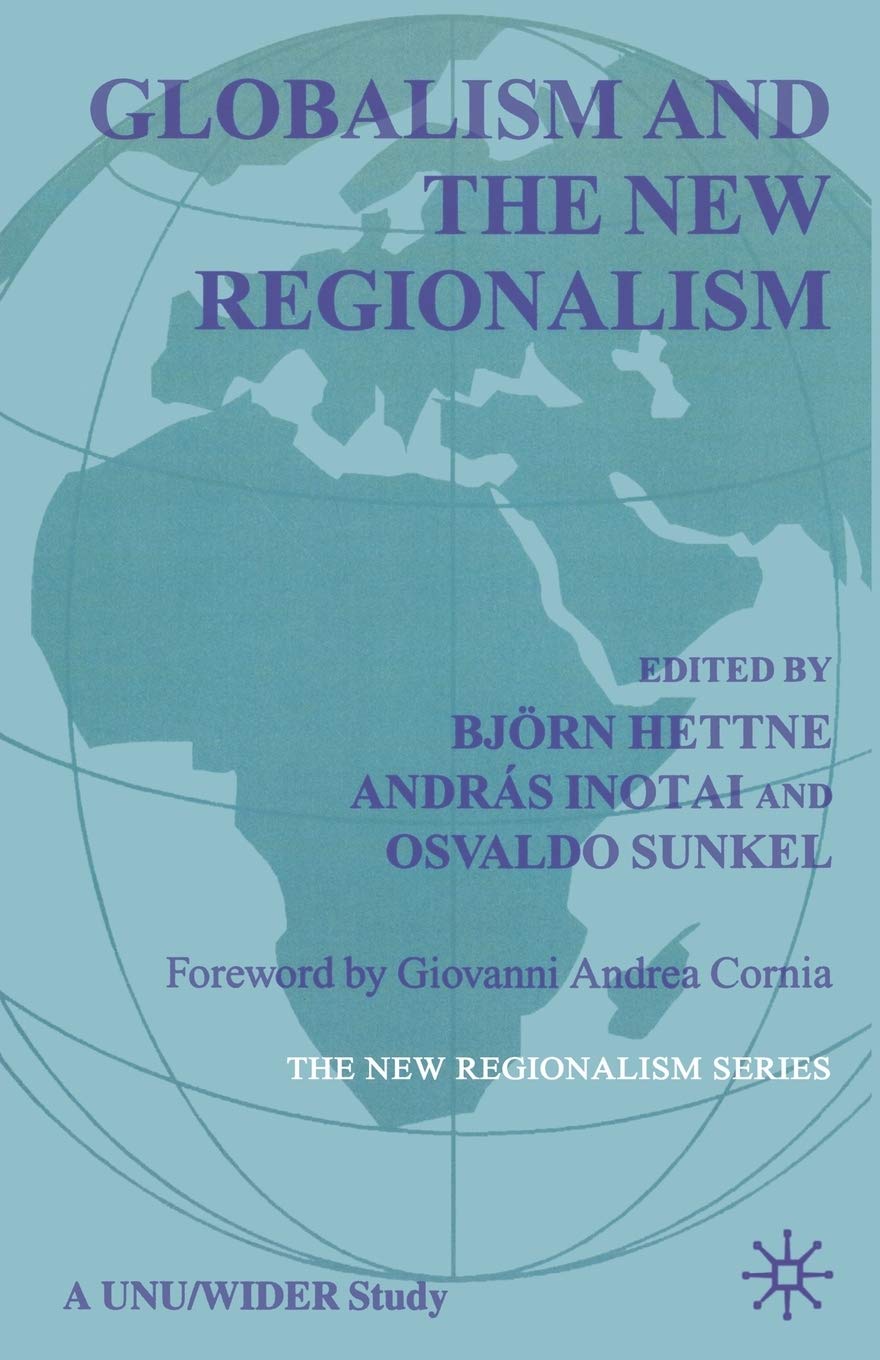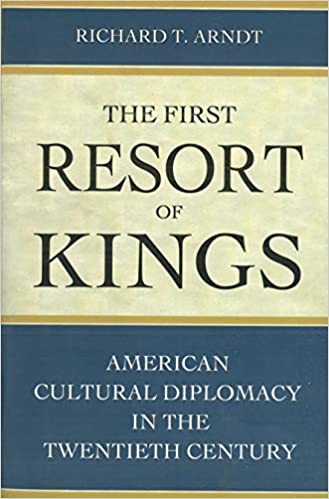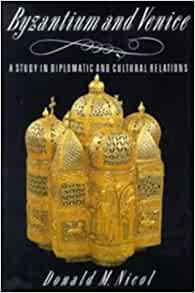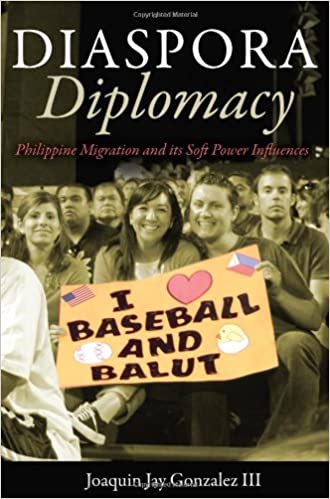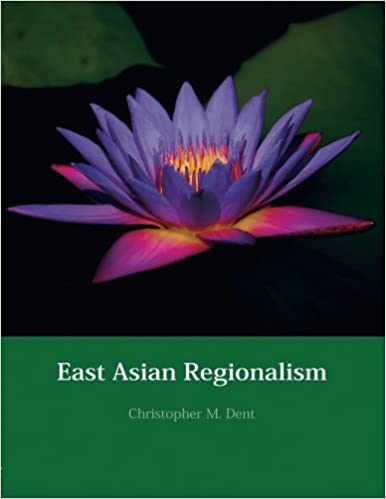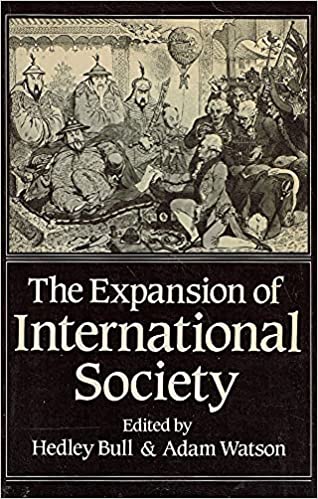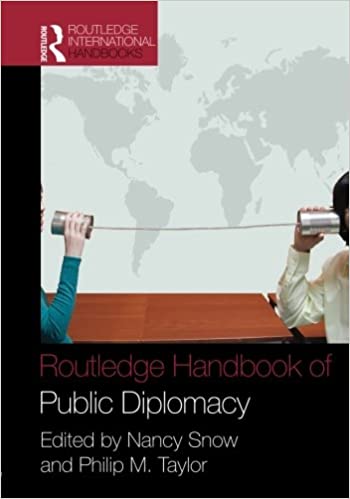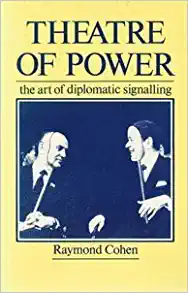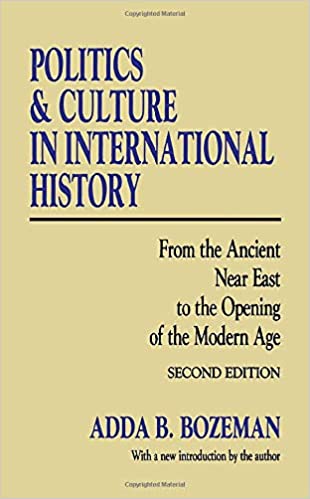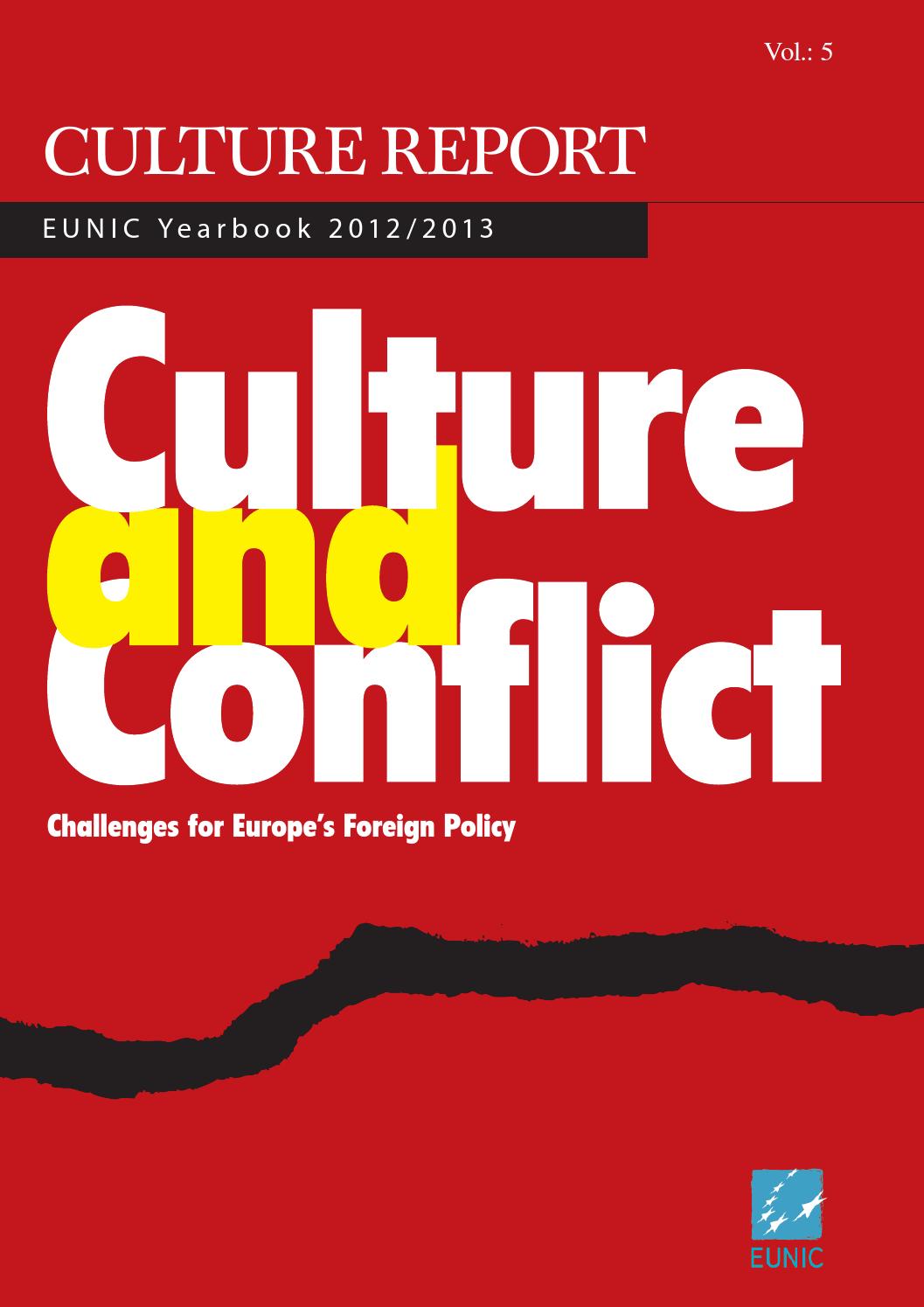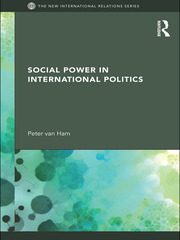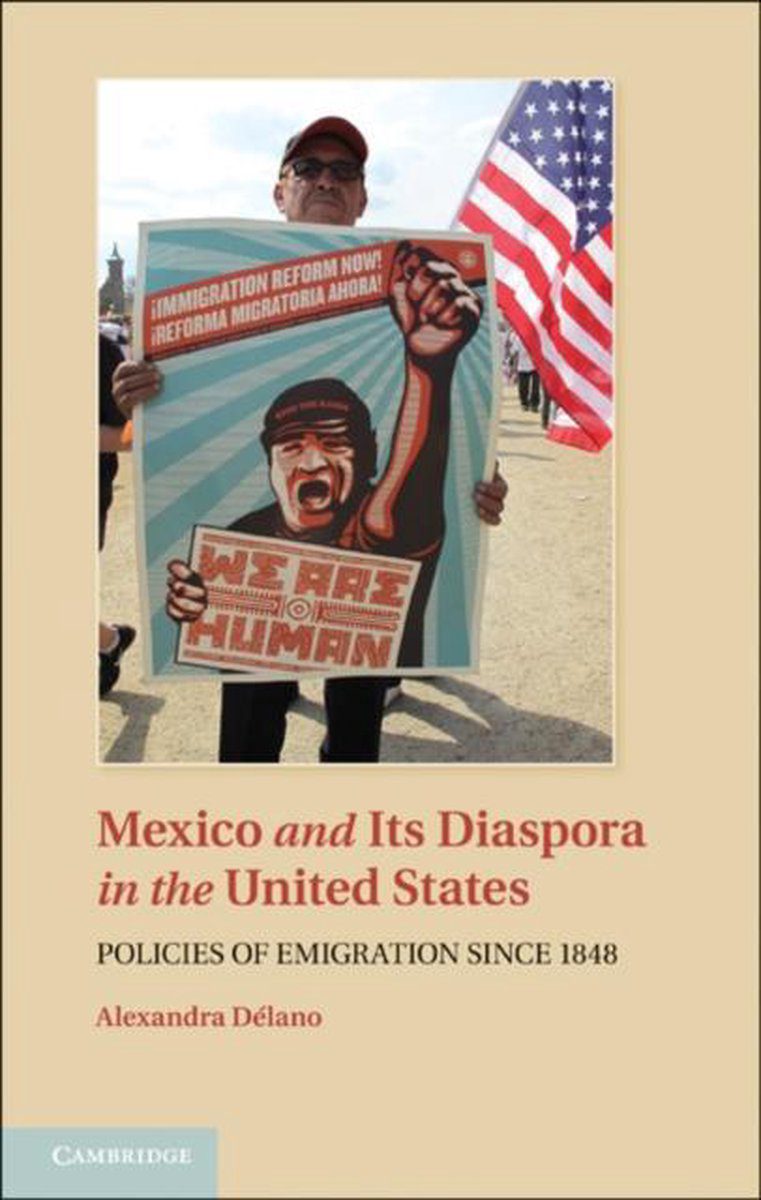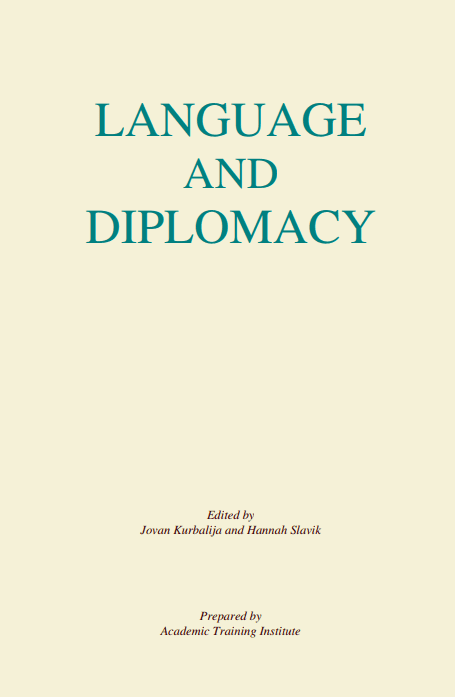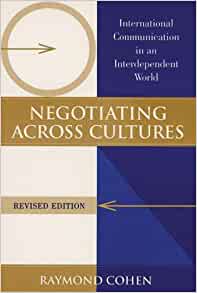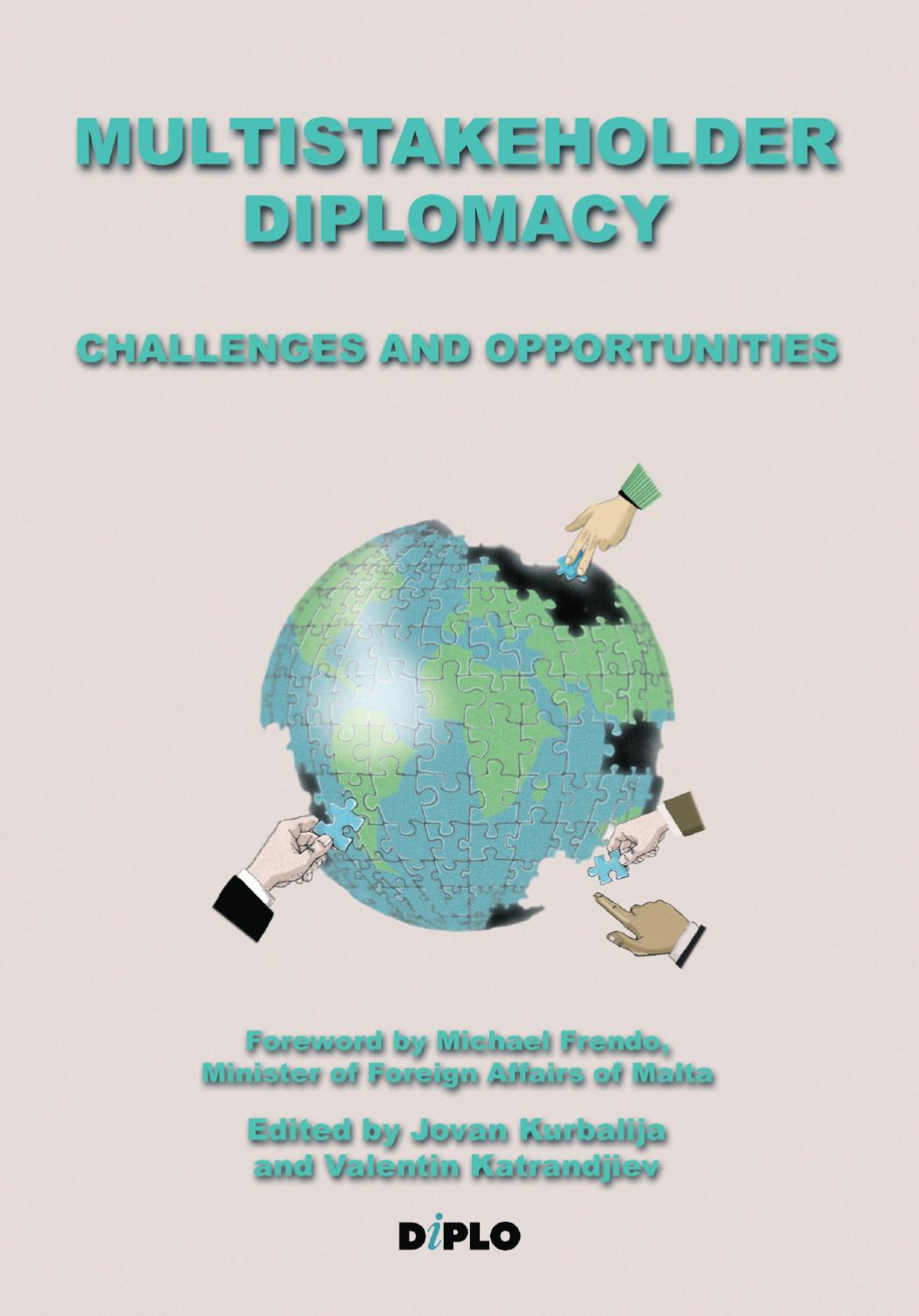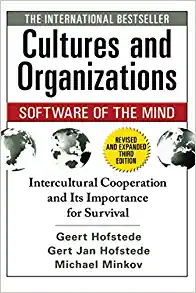Author: Nike Carstarphen
Making the “other” human: The role of personal stories to bridge deep differences
2004
The conference announcement for the International Conference on Intercultural Communication and Diplomacy 2003 quoted Raymond Cohen as saying: “By definition, negotiation is an exercise in language and communication, an attempt to create shared understanding where previously there have been contested understandings. When negotiation takes place across languages and cultures the scope for misunderstanding increases.” Taking that as our starting point, I would add that conflict resolution (my locus of practice) is essentially the art and science of relationship building and agreement building. This is true whether one focuses on individuals, groups, or nations striving for peace. Both relationship building and agreement building require, in Cohen’s words, an attempt to create shared understanding. Similarly, others have talked of the need for conflict parties to develop “co-created narratives” 1Sara Cobb, “Empowerment and Mediation: A Narrative Perspective,” Negotiation Journal 9 (July 1993), 245-259 or a “third culture” 2Benjamin J. Broome, “Managing Differences in Conflict Resolution: The Role of Relational Empathy,” in Conflict Resolution Theory and Practice: Integration and Application, eds. Dennis J.D. Sandole and Hugo van der Merwe (Manchester: Manchester University Press, 1993), 97-111
When conflicts are between parties from different cultures, the process of developing shared understandings is especially difficult. Even more difficult to resolve are protracted, deep-rooted conflicts characterised by fractured, hostile and oftentimes violent relationships. How do negotiators and other conflict resolution practitioners from different cultures create shared understanding under these conditions? For that matter, is shared understanding enough to bridge deep differences? This paper suggests that developing shared understanding is part of the larger need for building relationships between conflict parties, especially when the conflict parties have a history of animosity. My particular interest and focus is on inter-group conflict resolution between groups at the community and national levels. What follows is a tripartite model of conflict and conflict resolution, the role of personal stories for bridging deep differences and building relationships, and their implications for diplomacy.
Tripartite Model of Conflict and Conflict Resolution
Conflict may be conceptualised as including three components: (1) the substantive issues (perceived goal incompatibility, interests, issues), (2) conflict behaviours and processes employed for resolving the conflict (e.g., violence, litigation, negotiation, mediation), and (3) conflict relationships (psychological factors, attitudes, perceptions, etc.) between conflict parties 3Johan Galtung, “Peace, Violence, and Peace Research,” Journal of Peace Research 6 (November 1969), 167-191. Christopher R. Mitchell, The Structure of International Conflict (New York: St. Martin’s Press, 1981 Christopher W. Moore, The Mediation Process: Practical Strategies for Resolving Conflict (San Francisco: Jossey-Bass, 1986)). Although these components are interrelated, one may be the primary source of the conflict. Over time, another component may become the primary reason the conflict escalates and continues. For example, a conflict may initially begin as a dispute over water resources. If not resolved, the conflict parties may resort to increasingly hostile behaviours, which then drives the conflict. Ongoing hostile behaviour, especially if it escalates into violence, changes the basic relationship between the parties to one characterised by extreme polarisation, demonisation, and dehumanisation. The psychological and relationship changes then become the drivers of the conflict as the parties begin to fight not only to achieve their interests, but also to punish the other 4Jeffrey Z. Rubin, Dean G. Pruitt, and Sung Hee Kim, Social Conflict: Escalation, Stalemate, and Settlement (New York: McGraw-Hill, 1994)
Despite the tripartite model in much of the conflict analysis literature, the primary focus in conflict resolution literature has been on resolving specific substantive issues (e.g., disputes over resources, territory, arms), changing behaviours (e.g., moving from violence to negotiating), and improving resolution processes (e.g., negotiation, mediation, joint problem-solving). There has been less focus on improving conflict attitudes, perceptions, and relationships. The attitudes, perceptions and relationship issues are often treated as by-products of conflict escalation and resolution and are assumed to be largely resolved through the settlement of substantive issues using appropriate resolution processes 5Mitchell, The Structure of International Conflict. Roger Fisher and Bill Ury, Getting to “Yes”: Negotiating Agreement Without Giving In (Boston: Houghton Mifflin, 1981. From this point of view, relationship building is reduced to developing a “working trust” sufficient to reach agreement. However, as agreements fall apart and acrimony continues, the easy assumption is that the “other” wasn’t really interested in peace. The problem might actually be the lack of real relationship building that addresses the underlying psychological and human needs and hurts of the conflict parties that fuel the conflict. I suggest that many conflicts go unresolved because of the lack of sufficient focus on improving the relationship between the conflict parties.
Relationship building is not only a worthy end in itself, but may also be the key towards conflict de-escalation, resolution and transformation, especially in protracted, deep-rooted conflicts between different identity and cultural groups 6John Burton, Conflict and Communication: The Use of Controlled Communication in International Relations (New York: Free Press, 1969). Ronald J. Fisher, Interactive Conflict Resolution (Syracuse, NY: Syracuse University Press, 1997). Herbert C. Kelman, “Overcoming the Barriers to Negotiation of the Israeli-Palestinian Conflict,” Journal of Palestine Studies 16 (Autumn 1986), 13-28. John Paul Lederach, Building Peace: Sustainable Reconciliation in Divided Societies (Washington: United States Institute of Peace, 1997. W. W. Wilmot and J. L. Hocker argue that identity and relational issues are the “drivers” of disputes and they underlie content and process issues; they write, “Because we are human beings, our inherent subjectivity drives dispute… the more severe and strained the conflict, the less satisfying the content approaches will be” 7William W. Wilmot and Joyce L. Hocker, Interpersonal Conflict (Boston, MA: McGraw-Hill), 66-67. John Paul Lederach suggests the key towards building peace in contemporary conflicts is restructuring the relationship of conflict parties:
“To be at all germane and salient in contemporary conflict, peace building must root and direct itself to the realities facing the experiential and subjective facets of peoples’ needs. However, it is at this very point that the conceptual paradigm and praxis of conflict resolution must shift significantly away from the traditional framework and activities that make up statist diplomacy.
I believe this paradigmatic shift is articulated in the movement from a frame of reference concerned primarily for the resolution of issues and toward one that envisions the reconciliation of relationships. This calls for a conceptual framework that goes beyond a mechanical structural, or issue focused approach.” 8Lederach, Building Peace, 91-92
The best approach to resolving a conflict in the long run is to match the strategy used to resolving it with the type of conflict one is seeking to resolve. Conflict analysis should precede efforts at conflict resolution. While this is stating the obvious, too often parties (and third party interveners) rush to trying to resolve the conflict before they understand the nature of the conflict; these parties suffer from the “hurry up, let’s fix it” syndrome. But, as one of my professors insisted, “Sometimes you have to go slow, to go fast” 9Mr. Frank Blechman, former faculty member at the Institute for Conflict Analysis & Resolution, George Mason University. One simple “typing” of conflicts is Jay Rothman’s distinction between interest-based conflicts and identity-based conflicts 10Jay Rothman, Resolving Identity Based Conflicts in Nations, Organizations, and Communities (San Francisco: Jossey-Bass, 1997. Interest-based conflicts are usually concrete, clearly defined, and each side seeks outcomes that are bounded by the resources at stake (e.g., land, money, military and economic power). Identity-based conflicts are relatively intangible and deeply rooted in complex and multidimensional psychological, historical, and cultural factors. Identity conflicts typically emerge from frustrated and unmet needs and values and centre on such identity needs as dignity, safety and control. Rothman argues that all identity conflicts contain interest conflicts. However, not all interest conflicts contain identity conflicts, although many do, particularly the longer the conflict goes on and the more it escalates.
Rothman suggests that interest conflicts are suitable for resolution via mediation, negotiation and problem solving, while identity conflicts are best approached via a dialogue and reconciliation process about needs and values promoting “voice,” mutual recognition and the discovery of common ground. Simply put, you can negotiate over interests, but you cannot negotiate over identity. It is generally only when the underlying sources of insecurity in identity conflicts are surfaced and needs are addressed, that the interest-based aspects of these conflicts may become amenable to negotiation. Thus, in identity driven conflicts, the conflict resolution process should begin with focusing on and resolving some of the relationship issues or identity needs, before one can proceed to resolving substantive issues and interests.
A simple illustration from my work with teenage gangs in Washington, DC shows the distinction between interest-based and identity-based conflicts. I became involved in an intervention between two teenage gangs from adjoining neighbourhoods in a predominantly Latino immigrant community. The gang members were all male immigrants to the area. The two gangs were constantly fighting each other over what seemed to be a territorial issue – an interest-based conflict. Whenever members of one gang entered the “territory” of the other gang, they were subject to being attacked. Each gang had clearly staked out their territory and “trespassers beware.” The two gangs fought frequently and had been fighting for many years in a seemingly endless cycle of attack and counter-attack.
I was asked to co-facilitate a weekend dialogue retreat between the leadership of the two gangs 11My co-facilitators were affiliated with the Institute for Conflict Analysis & Resolution, including Frank Blechman, Giselle Huamani Ober, and Ngozi Robinson, and Barron Bingen of Barrios Unidos (a gang intervention organisation). Four members of each gang participated. We used a dialogue model to facilitate the discussion and relied heavily on the use of personal stories. It took only a few hours to discover three key elements of the conflict that laid the foundation for resolution.
First, none of the gang members really remembered what had started their conflict. The feud between the two gangs had preceded their membership. They were merely carrying on a tradition against the “evil other.” Upon realising that no one could remember what started the conflict in the first place, they laughed a bit and realised it was pointless to point the finger of blame at each other. The tension began to ease a little.
Second, the gang members’ “territory” was the neighbourhood in which they lived, went to school and worked. It was their home. They felt a personal connection to their neighbourhood. It was part of their identity, which went beyond territorial interests. When members of the other gang came into their territory, it was as if the other had invaded their home uninvited. In addition, when the gangs “invaded” each other’s homes, each gang also perceived the other gang as “acting like they owned the place.” That added insult to injury. After discussing the “issue” of territory and how the other’s behaviour impacted them, they discovered that teenage girls in their neighbourhoods would often invite gang members from the other neighbourhood to their parties. Therefore, “the others” were often invited guests, not trespassers. They realised the real problem between the two groups was about respect – respect for their home and respect for the gang members individually and collectively. They discovered that each gang had the same perception of the other gang – the “mirror image” effect that Ralph White found in his research on US-USSR relations 12Ralph K. White, Fearful Warriors: A Psychological Profile of U.S.-Soviet Relations (New York: Free Press, 1984). Both groups saw the other as disrespectful for behaviour they never questioned in themselves. Upon these discoveries, the participants realised that as long as each group showed respect to the other, they had no real “beef” (as they called it); they had no conflict.
Third, the gang members found common ground in the form of common values and hopes for the future. We asked them to talk about the impact of violence in their personal lives. One of the older gang members told a particularly emotional story in a very solemn voice about his life and his mother. He talked about how surprised he was to still be alive (at age 19) given all that he had been involved in. He said he wanted to quit fighting and “do the right thing” because he didn’t want his mother to cry over him anymore, especially since she was working so hard to give him a better life in a new country. He wanted his mother to be proud of him, not to be mourning his death. The room was absolutely silent as the older participant told his story. The normally fidgety young men sat completely still. You could hear a pin drop in the silence that followed as everyone reflected on the story and its resonance with their own lives. They realised they all wanted their mothers to be happy and proud of them, which meant they had to change their lives and stop the violence in their community. At that point they made a commitment to make peace.
The two gangs developed a new relationship built on mutual understanding and respect and their shared love for their mothers and desire to end the violence in their community. To celebrate their new relationship, they agreed to jointly design and paint a wall mural in their community as a symbol of their peace agreement and smoked a “peace pipe” to celebrate their new relationship. To the best of my knowledge, the two gangs have not fought each other since that weekend retreat four years ago.
I tell this story for two reasons. One, I want to illustrate that while all conflicts may include tangible, substantive issues, many conflicts are essentially about intangible, subjective relationship issues. Substantive issues are amenable to negotiation. However, relational issues, such as those over identity and respect require a different approach to resolve. Second, I tell this story to begin the discussion of how personal stories are a powerful tool for developing shared understanding and new relationships.
What follows are the results of two recent studies on what leads to positive changes in attitudes and relationships between individuals and groups in inter-group conflicts.
Study 1: How Do We Make “The Other” Human?
An often noted observation is that cultural differences between identity groups (or any individuals and groups) do not generally cause conflicts, but may exacerbate them and make them harder to resolve. One way that cultural differences exacerbate conflicts is by making the “other” seem so different from “us.” In extremely polarised conflicts, the other is also seen as less human than “us.” It is easier to dehumanise people and groups who seem so different from us. Once the other is dehumanised, it becomes much easier to aggress against them, thereby escalating and perpetuating the conflict $13Herbert C. Kelman, “Violence Without Moral Restraint,” Journal of Social Issues 29, 4 (1973), 25-62. Mitchell, The Structure of International Conflict. Henri Tajfel, “Experiments in Intergroup Discrimination,” Scientific American 223 (May 1970), 96-102. White, Fearful Warriors. Vamik D. Volkan, The Need to Have Enemies and Allies: From Clinical Practice to International Relationships (Northvale, NJ: Aronson, 1988). A challenge, then, for conflict resolution practitioners is how to make the other human again. What factors and processes lead to attitude change and improved relationships?
Research Methods
To explore inter-group relationship building, I interviewed diplomats, academics and practitioners of different types of conflict resolution efforts around the globe (N=19). I also interviewed participants of several dialogue groups (N=31) in the United States, including those from Jewish-Palestinian dialogues, race/ethnic dialogues, and pro-life/pro-choice dialogues around the abortion issue. The interview questions focused on what factors facilitated positive changes in interpersonal and inter-group attitudes and reconciled relationships in the context of small-group third party intervention efforts.
Research Results: The Power of Personal Stories
The interviews showed that the first step in relationship building is to “make the ‘other’ human” and that sharing personal stories – in the spirit of genuine dialogue – was the most successful starting point in this process. Personal stories included stories of past personal experiences, the meaning and impact of those experiences, why and how participants came to hold their attitudes, beliefs and perspectives, and basically any discussion that focused on participants’ personal experiences and meaning-making of the world, especially in relation to the conflict and the other. These could include discussions of substantive issues, but the focus was on the meaning and impact of these issues on the participants. Personal stories included the participant’s direct experiences and the experiences of others close to the participants (e.g., family, friends). Participants also connected these personal stories to their group or collective experience.
Listening to the other’s personal stories facilitated attitude change and reconciliation in three ways. First, stories helped adversaries break through their stereotypes, fears and animosities toward the other side by helping them begin to understand and recognise the other’s perspectives, needs, values and core concerns. Second, stories helped adversaries develop empathy with the other and helped them feel bonded and connected to the other at an emotional level. Third, stories helped adversaries discover common ground, shared experiences, needs, values, core concerns and hopes for the future. Listening to each other’s stories helped create bridges across deep differences and lay the foundation for reconciliation and conflict resolution.
Why are Personal Stories Powerful?
Storytelling is a process that empowers participants by giving voice to their experiences and core concerns. Storytelling is a window into underlying meaning systems, values and needs, and a process through which empathy, healing, trust, understanding and relationships can be nurtured 14Michelle LeBaron and Nike Carstarphen, “Negotiating Intractable Conflict: The Common Ground Dialogue Process and Abortion,” Negotiation Journal 13 (October 1997), 341-361. Tamra Pearson suggests that “using personal experience when discussing issues in dialogue can convey a personal involvement with the topic, can indicate its centrality to the speaker, and can indicate a sufficient trust in either the other party or at least in the setting to allow one to express personal reflections” 15Tamra J. Pearson, The Role of ‘Symbolic Gestures’ in Intergroup Conflict Resolution: Addressing Group Identity. Unpublished doctoral dissertation (Harvard University, Cambridge, MA, 1990), 96.
The interviews suggest that stories were impactful because they were vivid, emotional, concrete and sincerely told personal experiences that touched and opened the hearts and minds of the listeners. For stories that were of painful experiences (physical and/or psychological), the impact on the listener was often surprise and shock at hearing these stories, and pain and empathy with the speaker and the other group. These personal stories also helped reveal the other’s humanity – “they have pains, sorrows, fears, feelings, thoughts, and experiences just like me.” Listening to the other’s stories and feeling the other’s pain and humanity helped the listener to begin to feel a personal connection and bonding with the other and helped to build a feeling of trust that the other wasn’t out to hurt them. Stories also increased the listeners’ understanding of the other by helping them be more willing and able to listen, reflect and think about the other’s experiences, perspectives and feelings with an open mind.
The power of personal stories may be related to people’s tendencies to match other people’s emotions. Hatfield, Caioppo and Rapson refer to this tendency as emotional contagion and as something that develops in early childhood 16Elaine Hatfield, John T. Cacioppo and Richard L. Rapson, Emotional Contagion (Cambridge: Cambridge University Press, 1994). When others are sad, we become sad. When others are happy, we become happy. When others are angry we become angry, and so on. The same dynamic may be operating when we listen to other’s personal stories. We naturally connect with the emotions they are expressing, be it fear, pain or happiness. Through this process, we begin to empathise with the other.
Personal stories may be particularly effective because they provide clear information about the experiences, concerns, needs, motivations and intentions of the storyteller. Research on emotions in childhood development indicates that when children were given better information about the internal states of others through language (e.g., why one is angry), which was delivered at intense emotional levels, they were better able to respond with understanding and concern 17Carolyn Zahn-Waxler, Marian Radke-Yarrow and Robert A. King, “Child Rearing and Children’s Prosocial Initiations Towards Victims of Distress,” Child Development 50 (June 1979), 319-330. Other research suggests that stories are effective because they are easy to follow, engaging and more likely to be remembered than other forms of communication 18J. Martin and M. E. Power, “Truth or Corporate Propaganda: The Value of a Good War Story,” in Organizational Symbolism, ed. Louis R. Pondy, P. Frost, G. Morgan and T. Dandritch (Greenwich, CT: JAI Press, 1983), 93-108. Cited in Carol D. Hansen and William M. Kahnweiler, “Storytelling: An Instrument for Understanding the Dynamics of Corporate Relationships,” Human Relations 46 (December 1993), 1391-1409.
Personal stories touched people because they expressed real and personal experiences, feelings and meanings. Personal stories were windows through which to see and feel the other and their life experiences. They brought out the humanity in the other in a way that was often irresistible; the other was naturally drawn closer to the storyteller. Listening to the other’s stories penetrated people’s habituated system of denial, denigration and distance from the other. The individual stories create the opportunity to develop a shared story that is a more whole, inclusive and complex picture of the conflict that recognises everyone’s fears and pains of the past as well as their hopes and dreams for the future.
When people are engaged in conflict, especially protracted or violent conflict, or conflicts that attack one’s identity, people have intense emotions that often fuel the perpetuation of conflict. However, this research suggests that feeling, revealing and dealing with emotions, one’s own and others’ – whether pain, grief, anger and fear, or joy, love and hope – can also be a source of personal connection, trust-building, empathy, understanding and common ground, and is key to changing attitudes and relationships.
Listening to each other’s personal stories often led the individuals and groups to express acknowledgement of the other side. Acknowledgement was another key factor that facilitated shift. The role of acknowledgement has received more attention in the conflict resolution literature than personal stories 19Joseph V. Montville, “The Healing Function in Political Conflict Resolution,” in Sandole and van der Merwe, Conflict Resolution Theory and Practice, 3-24. Joseph Montville, “Complicated Mourning and Mobilisation for Nationalism,” in Social Pathology in Comparative Perspective: The Nature and Psychology of Civil Society, ed. Jerome Braun (Westport, CT: Praeger, 1995). Ronald Kraybill, “From Head to Heart: The Cycle of Reconciliation,” Conciliation Quarterly 7 (Fall 1988), 2-3, 8. Pearson, The Role of ‘Symbolic Gestures.’. Pearson found that the most significant statements in problem-solving workshops that seemed to shift the climate, relationships and negotiations were those that included some form of acknowledgement. Pearson suggests the power of acknowledgement can be explained by Tajfel and Turner’s social identity theory 20Henri Tajfel and John C. Turner, “The Social Identity Theory of Intergroup Behavior,” in Psychology of Intergroup Relations, ed. Stephen Worchel and William G. Austin (Chicago: Nelson-Hall, 1986). This theory posits that until different groups acknowledge each other’s identity and experiences, they are often locked into a social comparison process that results in the need to assert one’s own group’s superiority over the other group. Pearson asserts that acknowledgment validates the other’s group worth and therefore diffuses the necessity for social comparison at the identity level. This suggests that underlying social identity theory and the social comparison process are deep insecurities. Once the different groups acknowledge each other, this boosts their collective sense of self-esteem and identity reducing the need to deny and denigrate the other.
Sharing personal stories and expressing acknowledgement were impactful because they touched the participants emotionally or met their psychological and identity needs in some way. Many scholars and practitioners have discussed the need for acknowledgement between identity groups to achieve reconciliation and conflict resolution. What has been less clear in the literature and research has been what leads people and groups to acknowledge others in the first place. This research sheds some light on that and suggests that sharing personal stories may be a key process that encourages acknowledgement.
The powerful role of personal stories in facilitating shift was clear from the interviews. What was less clear was the role of facts, information and general explanations that didn’t include a personal element. Less than half of the people interviewed reported this type of communication as facilitating attitude change and reconciliation. In many cases, facts, information and explanations were seen as something to be argued with and reasoned against just as conflict parties’ positions can be debated and negated. But participants couldn’t argue with other’s stories. They might discuss the interpretation of events in those stories, but they couldn’t deny that they happened.
While personal stories also include facts, information and explanations, or are used to illustrate facts, information and explanations, they impact the listener in a different way. The difference seems to come from people’s ability to feel empathy, see the other’s humanity, and feel a personal connection and bonding to other people’s stories much more easily than to other people’s facts, information and explanations. So, while the famous movie line, “Give me the facts ma’am, and nothing but the facts,” may work well in a courtroom, such “cold, hard facts” are insufficient to facilitate attitude change and build relationships. What seems key in personal stories is their ability to connect with the listener at an emotional level.
Study 2: Experimental Design: Personal Stories versus Rational Explanations
The purpose of the second study was to further explore the differential effects of personal stories versus rational explanations for inducing positive attitude change toward the other conflict party in a protracted and violent inter-group conflict. In addition, given that dialogues or discussions between conflict parties would likely include both types of communication, this study tested the assumption that both approaches would be better than only one approach and whether there was an optimal sequence to these approaches for inducing positive attitudes. The study examined three primary hypotheses:
H1: Personal stories are more likely to induce positive attitudes than rational explanations.
H2: A combination of personal stories and rational explanations is more likely to induce positive attitudes than either approach alone.
H3: The combined approach of personal stories before rational explanations (story-first approach) is more likely to induce positive attitudes than the combined approach of rational explanations before personal stories (explanation-first approach).
Methods
A pretest-posttest experimental design examined shift (attitude change) using a simulated prenegotiation dialogue in which participants (n=81; undergraduate students) assumed the role of a negotiator in an interethnic conflict. However, no actual dialogue or negotiation took place. The experiment tested the impact of two types of written communication by an opposing negotiator on subjects’ attitudes and perceptions of the “other” side, the conflict situation, and their expectations about the presumed upcoming negotiations. Specifically, the experiment tested the impact of affective approaches (reading the opponent’s personal story of tragedy suffered in the conflict) versus cognitive approaches (reading the opponent’s rational explanations of his/her side’s perspectives and actions in the conflict) on attitude change in the reader.
The personal story and rational explanation were adapted from real-world experiences and explanations of conflict parties in interethnic conflicts. Six coders read the materials to be used for the cognitive and affective experimental conditions (the “statements” made by the opponent) and rated each of the materials on their communication style and content using dichotomous statements on a 7-point scale. The items representing each of the conditions was as follows:
- Personal story: assessed by the 8 items: feeling-oriented, emotional, expressive, subjective, concrete, specific, personal, passionate
- Rational explanation: assessed by the 8 items: facts-oriented, rational, calm, objective, abstract, general, impersonal, dispassionate
Table 1 summarises the simulated pretest/posttest design .
Table 1: Simulated Pretest/Posttest Design
| Conditions | Stage 1 Attitude Induction | Stage 2 Attitude Change | Stage 3 Prenegotiation Questionnaire |
| Hostile Pretest | X | O | X |
| Story-Only | X | X – Personal Story | X |
| Explanation-Only | X | X – Explanation | X |
| Story-First | X | X – Personal Story, Explanation | X |
| Explanation-First | X | X – Explanation, Personal Story | X |
The procedures were divided into three stages: (1) attitude induction of negative attitudes toward the other side; (2) attitude change via a personal story, and/or a rational explanation; and (3) a prenegotiation questionnaire, which measured the participants’ attitudes toward the other, the conflict situation, and expectations about the presumed negotiations. The design included one pretest (control) condition and four experimental conditions. The “hostile” condition served as the pretest condition and reflected “no approach.” The four experimental conditions included the following: “story-only;” “explanation-only;” “story-first” approach (story then explanation); and “explanation-first” approach (explanation then story). Attitude change (as measured by a number of factors described below) was the dependent variable and the experimental conditions were the independent variables. The conditions were embedded in the written materials received by subjects.
Although the procedures do not follow the traditional pretest/posttest method whereby participants complete both a pretest and posttest measure (e.g., between Stage 1 and 2), this simulated pretest/posttest method has been used in other experiments to avoid encountering repeated measure artifacts such as pretest sensitivity 21Louise Lemyre and Philip M. Smith, “Intergroup Discrimination and Self-Esteem in the Minimal Group Paradigm,” Journal of Personality and Social Psychology 49, 3 (1985), 660-670). This was of particular concern in the present research given the short time delay (about 10 minutes) between the pretest and posttest measures.
The Conflict Scenario
The conflict scenario is an adaptation of a simulation, the “Cygnus Conflict,” used by Druckman et al 22Daniel Druckman, Benjamin Broome and Susan H. Korper, “Value Differences and Conflict Resolution: Facilitation or Delinking?” Journal of Conflict Resolution 32 (September 1988), 489-510. The present study included two simulated ethnic groups, Ruritans and Graustarks, who are in conflict within the nation of Cygnus. Participants were asked to take the role of a negotiator from the Graustark side of the conflict (the participants did not realise that they all had the same role). The conflict setting and issues were described in a 9-page document that included an overview of the exercise, background information about Cygnus, a historical chronology of the conflict, information about the negotiator’s family history and role as a negotiator, and the issues on the table for negotiation. After reading the background information, the subjects were then instructed to imagine that today (the day of the simulation) was the day of their prenegotiation, informal dialogue with the other side’s negotiators. Participants in all conditions then read a statement supposedly made by their opponent that was hostile and accusatory. The participants in the pretest condition then completed the prenegotiation questionnaire while the participants in the experimental conditions read additional statements made by their opponents appropriate to their experimental condition. Following their reading of the additional statement(s), these participants then completed the prenegotiation questionnaire.
Dependent Variables
The effects of the conditions were assessed using 49 questions on 7-point rating scales to assess a variety of attitudes about the opponent, the negotiator’s group, and expectations about the upcoming negotiations. The 49 questions represented eight dimensions or composite variables as follows:
- General Attitudes About the Opponent’s Personality/Behaviour: assessed by 13 items: fair, trusting, trustworthy, compromising, peaceful, friendly, sincere, logical, practical, predictable, effective, intelligent, similar to us
- Feelings Toward the Opponent: assessed by 8 items: care about, feel compassion toward, respect, forgive, like, positive feelings toward, can get along with, willing to invite to my home
- Understanding/Empathising with Opponent: assessed by 5 items: easy to understand, understand perspectives, understand actions, has legitimate concerns, empathise with
- Assumptions About the Opponents’ View of Us: assessed by 5 items: trusting of us, cares about us, likes us, understand us, sees our legitimate concerns
- Attitudes About the Opponents’ Role in the Conflict: assessed by 4 items: not responsible for the conflict, used defensive military actions, justified actions, are victims
- Attitudes About Our Role in the Conflict: assessed by 4 items: not responsible for the conflict, used defensive military actions, justified actions, are victims
- Expected Negotiation Climate: assessed by 4 items: open climate, cooperative climate, productive climate, friendly climate
- Expected Negotiation Outcomes: assessed by 6 items: opponent wants fair agreement, expect satisfactory resolution, we have compatible solutions, win/win situation, I am willing to compromise, opponent willing to compromise
A total attitude score was calculated by summing the scores for the eight dimensions and dividing by eight to determine one mean score.
Results
Table 2 presents the results. A one-way analysis of variance (ANOVA) was conducted to measure differences in means among the hostile pretest condition and four experimental conditions. The Newman-Keuls multiple range tests was conducted to identify which specific changes from the pretest (hostile condition) to the posttest (experimental conditions) were significant. The ANOVA analysis and multiple range tests were also used to compare means between the post-test conditions. A higher score indicates more positive attitudes – more friendly, cooperative, and so on.
Table 2: Mean Scores for All Conditions on Eight Dimensions
| Dimensions | Hostile Pretest | Story-Only | Explanation-Only | Story-First | Explanation-First |
| Opponent in General | 33.07 | 48.50*1,2 | 41.00*1 | 52.13*1,2 | 50.13*1,2 |
| Feelings Toward Opponent | 27.07 | 35.13*1 | 28.67 | 32.88 | 33.40 |
| Understanding the Opponent | 24.27 | 24.88 | 22.41 | 26.33*2 | 26.47*2 |
| Opponent’s View of Us | 8.80 | 13.40*1 | 11.94*1 | 12.75*1 | 13.33*1 |
| Opponent’s Role in Conflict | 13.27 | 14.88 | 14.89 | 17.63*1 | 15.60 |
| Our Role in Conflict | 15.00 | 16.56 | 16.75 | 18.63*1 | 16.80 |
| Expected Negotiation Climate | 11.33 | 15.88*1 | 13.72 | 16.00*1 | 15.13*1 |
| Expected Negotiation Outcomes | 19.93 | 25.94*1 | 22.94 | 24.88*1 | 24.53*1 |
| TOTAL ATTITUDE SCORE | 19.09 | 24.58*1,2 | 21.54*1 | 24.98*1,2 | 24.43*1,2 |
*1 — indicates the mean score is significantly different at p<0.05 in the experimental condition versus the hostile pretest condition (Newman-Keuls multiple range tests) *2 — indicates the mean score is significantly different in the story-only, story-first or explanation-first condition versus the explanation-only condition at p<0.05 (Newman-Keuls multiple range tests)
The hypotheses were tested from two perspectives. First, the posttest was compared to the pretest. Second, the posttest scores were compared to each other.
Comparison of the mean scores of the experimental posttest conditions to the pretest condition on the 8 dimensions had the following results:
- Story: showed significant changes from the pretest on five of the eight dimensions (63%): attitudes about the opponent in general (F[4,75]=15.06, p<0.0001), feelings toward the opponent (F[4,75]=3.14, p<0.02), assumptions about the opponent’s view of us (F[4,74]=3.21, p<0.02), our expectations about the negotiation climate (F[4,75]=4.43, p<0.003), and negotiation outcomes (F[4,75]=4.03, p<0.006); and the total attitude score (F[4,73]=10.09, p<0.0001)
- Explanation: showed significant changes on two of the eight dimensions (25%): attitudes about the opponent in general (F[4,75]=15.06, p<0.0001) and opponent’s view of us (F[4,74]=3.21, p<0.02); and the total attitude score (F[4,73]=10.09, p<0.0001)
- Story-first: showed significant changes on six of the eight dimensions (75%): attitudes about the opponent in general (F[4,75]=15.06, p<0.0001), assumptions about the opponent’s view of us (F[4,74]=3.21, p<0.02), opponent’s role in the conflict (F[4,75]=2.53, p<0.05), our role in the conflict (F[4,75]=2.40, p<0.06), our expectations about the negotiation climate (F[4,75]=4.43, p<0.003), and negotiation outcomes (F[4,75]=4.03, p<0.006); and the total attitude score (F[4,73]=10.09, p<0.0001)
- Explanation-first: showed significant changes on four dimensions (50%): attitudes about the opponent in general (F[4,75]=15.06, p<0.0001), assumptions about the opponent’s view of us (F[4,74]=3.21, p<0.02), our expectations about the negotiation climate (F[4,75]=4.43, p<0.003) and negotiation outcomes (F[4,75]=4.03, p<0.006); and the total attitude score (F[4,73]=10.09, p<0.0001)
Comparing the mean scores of the experimental posttest conditions to each other on the 8 dimensions and total score had the following results:
- Story: showed a significantly more positive attitude than the explanation condition on one dimension: attitudes about the opponent in general (F[4,75]=15.06, p < .0001); and the total attitude score (F[4,73]=10.09, p<0.0001)
- Story-First, Explanation-First: showed a significantly more positive attitude than the explanation condition on two dimensions: attitudes about the opponent in general (F[4,75]=15.06, p<0.0001); understanding the opponent (F[4,74]=3.02, p<0.03); and on the total attitude score (F[4,73]=10.09, p<0.0001)
Hypothesis 1
This hypothesis posited that the story-only approach is more effective than the explanation-only approach for inducing positive attitudes. The story-only condition had a higher percentage (63%) of significant changes from the pretest to posttest on the eight dimensions than the explanation-only condition (25%).
When comparing the posttest means between the story and explanation, the story showed significantly more positive attitudes than the explanation on one dimension (13%): the opponent in general (F[4,75]=15.06, p<0.0001). The story also showed significantly more positive attitudes than the explanation on the total attitude score (F[4,73]=10.09, p<0.0001). These results support Hypothesis 1 that personal stories are more likely to induce positive attitudes than rational explanations.
Hypothesis 2
This hypothesis suggested the combined approaches are more effective than either approach alone. Comparing the posttest scores to the hostile pretest, the story-first condition (6 significant changes, 75%) and explanation-first condition (4 significant changes, 50%) were much more effective than the explanation-only condition (2 significant changes, 25%) for inducing shift from the pretest hostile condition. Both combined conditions were also significantly more positive than the hostile pretest on the total attitude score. The story-first condition was slightly more effective than the story-only condition (5 significant changes, 63%). However, the explanation-first condition was slightly less effective than the story-only condition.
Comparing the posttest means between the experimental conditions showed the story-first and explanation-first conditions had significantly more positive attitudes than the explanation-only condition on two dimensions (25%): opponent in general (F[4,75]=15.06, p<0.0001) and understanding the opponent (F[4,74]=3.02, p<0.03). They were also more effective than the explanation-only condition on the total attitude score (F[4,73]=10.09, p<0.0001). There were no significant differences between the combined approaches and the story-only approach. These results suggest the combined approaches are more effective than the explanation-only approach. The story-first approach produced slightly more positive changes and the explanation-first approach was equally as effective as the story-only approach. The results show modest support for Hypothesis 2.
Hypothesis 3
This hypothesis compared the efficacy of the story-first and explanation-first conditions. The story-first condition had significantly more positive attitudes than the hostile pretest condition on 6 dimensions (75%). The explanation-first condition had significantly more positive attitudes than the hostile pretest condition on 4 dimensions (50%). Although the story-first condition had generally higher mean scores than the explanation-first condition, there were no significant differences in scores between the two conditions.
When comparing the pretest to the posttest results, the story-first condition is more effective for inducing positive shift than the explanation-first condition, suggesting support for Hypothesis 3. However, the lack of significant differences between the affective-first and cognitive-first conditions qualifies this conclusion. Overall, the results indicate weak support for the hypothesis that the story-first condition is more effective than the explanation-first condition for inducing positive shift in attitudes.
The lack of stronger results than predicted by the interviews in the previous study may be explained by the difference between a “real life” dialogue and the experimental setting used for this research. In a “real life” dialogue, what happens-in-the-moment is likely to be much more impactful on people’s reactions and what comes next than when participants are told what to do (e.g., read all the materials) in an experimental setting. In a real dialogue, people may get stuck in discussions of the substantive issues and never discuss the relationship issues. They may attempt to engage in rational discussion and problem-solving without ever focusing on attitudes and underlying meanings and personal experiences. In the real world, this might not lead to shift unless or until they focus on the issues from their personal experiences and/or underlying meanings. If the latter occurs, this may then help them re-evaluate information and discussions they may have dismissed or argued against earlier and help them get to a problem-solving state of mind. In the experimental setting, participants were told to read all the materials. They read both the personal story and the explanation before being asked to respond on the questionnaire. They did not have the same opportunity for “dialogue or problem-solving to breakdown” and were able to react to the materials as a whole, after reading them all, rather than incrementally and in-the-moment as would occur in a real dialogue. Therefore, in contrast to the “real world,” the ordering of the materials may have been less effective in the experiment.
Conclusion
In conclusion, the research revealed the transformative power of sharing personal stories for changing conflict parties’ hearts and minds toward the other conflict party, thereby paving the way for building peaceful relationships. In addition, combining personal stories with more rational discussion and explanations is more effective than either approach alone; especially more effective than hearing (reading) only rational explanations. The results suggest that inter-group interventions should include time for participants to share personal stories and meanings as well as engage in more rational discussion and explanations of each side’s perspectives. What is less clear from the data is whether there is a best time for this storytelling to take place. The interviews in Study 1 suggested that storytelling precede more “rational” discussion of the facts because the stories helped the listeners open their minds to hearing and discussing each other’s facts and perspectives. However, Study 2 showed only marginally better outcomes when the storytelling came before the rational explanations than vice versa. Given that most interventions likely include a mix of these approaches, further research is warranted to explore whether there is an optimal ordering of these two approaches. In fact, further research is warranted to validate the findings of this study given these hypotheses have not been tested elsewhere.
Implications for Diplomacy
The research presented in this paper was not conducted with diplomacy in mind. The research was focussed on helping conflict resolution third-party practitioners better understand what factors lead to improved attitudes and relationship building in the context of small-group interventions, in the hopes that this knowledge would help them design more effective intervention processes. Nevertheless, what are the implications of the research findings for diplomacy? I will suggest four possibilities:
Storytelling as Part of Prenegotiation Dialogues and Negotiations. The idea of having prenegotiation dialogues to improve relationships between negotiators is not new. However, this research suggests that part of the prenegotiation dialogue should include time for negotiators to share personal stories, whether they are of personal experiences or the impact and meaning of the conflict in their lives. This sharing should also include their personal visions and hopes for the future. An honest sharing of the past and hopes for the future will likely increase positive attitudes toward the other, including trust, which is crucial for genuine negotiation in good faith. Personalising the discussion may also be effective during negotiations. A simple illustration of this dynamic is found in the historic Camp David meetings with Presidents Carter, Begin and Sadat. During a conference, I heard President Carter tell this beautiful story (paraphrased here) about the turning point in the negotiations 23President Jimmy Carter speaking at the National Conference on Peacemaking and Conflict Resolution (NCPCR), Charlotte, North Carolina, USA, June 1991:
“After several days of unsuccessful negotiations, the Camp David meetings were at a standstill and Begin and Sadat were at an impasse. Fortuitously, at the start of the negotiations, Begin had asked Carter for an autographed picture to give to one of his grandchildren. Carter, while trying to figure out how to salvage the negotiations, had an assistant identify the names of all of Begin’s eight or so grandchildren, and then made personalised and signed photographs for each one. During the height of the impasse, Carter gave the photographs to Begin and said to Begin something like, ‘The negotiations are for them,’ while pointing to the names of the grandchildren. Begin was so surprised and touched by Carter’s gesture, and the implications of the negotiations for his family and future generations, that this simple gesture was the turning point in the negotiations.”
Track 1 and Track 2 Diplomacy. The majority of conflict intervention efforts that have focused on improving relationships have been in the realm of Track 2 diplomacy. The significant role of citizen diplomacy towards peacemaking is increasingly recognised by citizens and diplomats alike. Harold Saunders, former US diplomat and negotiator of the Camp David Accords wrote in his 1999 book, “Only governments can write peace treaties, but only human beings – citizens outside government – can transform conflictual relationships between people into peaceful relationships” 24Harold H. Saunders, A Public Peace Process: Sustained Dialogue to Transform Racial and Ethnic Conflicts (New York: St. Martin’s Press, 1999), xvii. For lasting peace, both are required. For diplomats to negotiate successful agreements, they may need to adopt the lessons learned by citizen diplomats, including the positive role of personal stories for changing and building relationship. If these are key to relationship building among citizens, it makes sense to assume the same is true for diplomats. An additional challenge is for citizens and diplomats to coordinate their efforts in order to maximise peacebuilding at all levels.
Spreading New Stories to the Masses. The value of small group dialogues and personal stories is clear. However, not everyone has the opportunity to participate in these processes directly. A challenge for citizen and government diplomats is how to spread what they learned through storytelling and dialogue to their constituents and people in general. One approach may be for political and civic leaders to share their new stories with others through the media and other communication channels. Leaders have long used stories to inflame anger and dehumanise the other. Therefore, leaders can use the same technology and techniques to spread new stories. The challenge will be to make these new stories as “sensational” and “exciting” as the past harmful stories so they capture the attention, imagination, hearts and minds of the listeners, and motivate them to new kinds of behaviours.
Facilitated Diplomacy. The intervention processes studies in my research were generally facilitated by a third party who was considered instrumental in designing and facilitating the dialogue process. Third party facilitators are useful in most conflict intervention settings, but may be crucial in conflicts characterised by great hostility and fractured relationships. Under these conditions, a facilitator may be needed to help the conflict parties communicate effectively and to encourage and help them use personal experiences to share underlying needs, values, meanings, and core concerns towards developing shared understanding and improved relationships.
These implications require further thought and elaboration.

